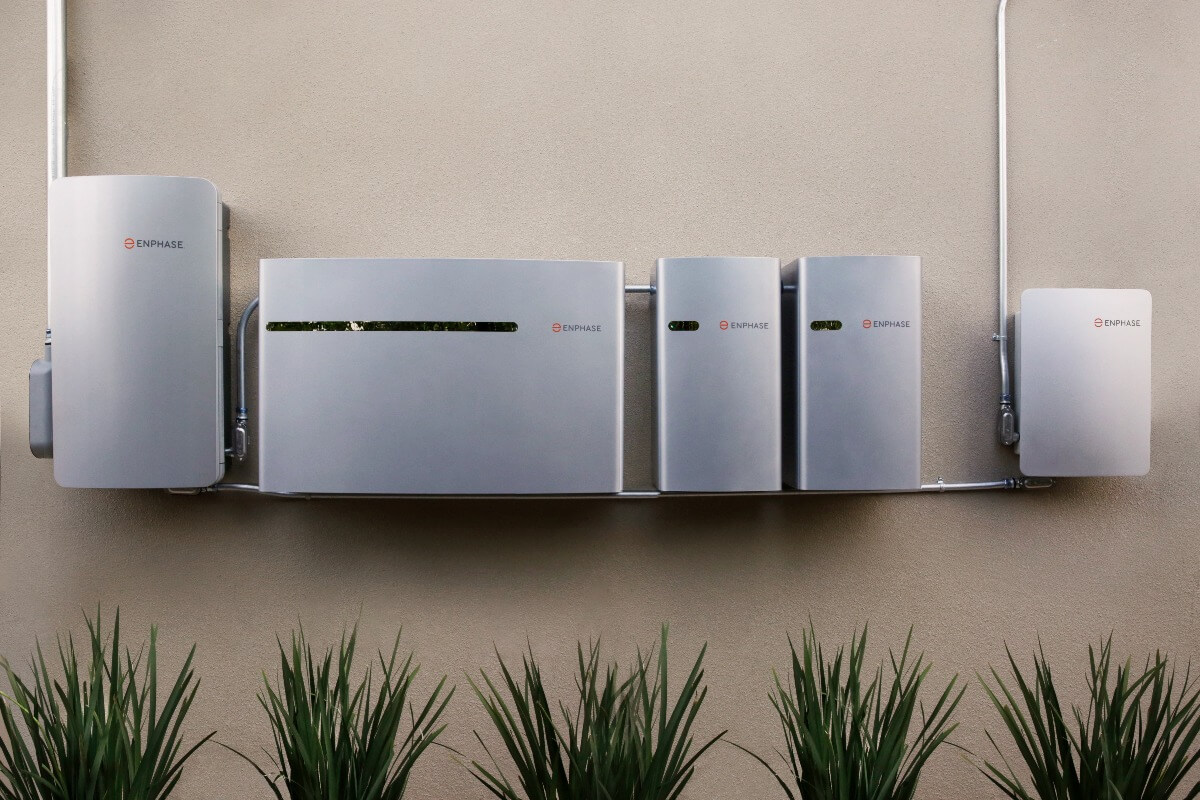
Top Solar Batteries to Maximize Energy Storage in 2025
With solar energy systems powering over 7% of U.S. homes in 2025, solar battery storage is essential for maximizing energy independence and solar energy savings. Solar batteries store excess energy generated during the day for use at night, during outages, or under time-of-use (TOU) rates, saving $500–$1,500 annually in high-rate states like California ($0.33/kWh). With the 30% Federal Solar Tax Credit expiring for residential installations on December 31, 2025, now is the time to invest in solar battery storage to reduce reliance on the grid and boost home value.
This guide highlights the top solar batteries for 2025, focusing on capacity, efficiency, power output, and compatibility, based on expert reviews from sources like EnergySage and Solar.com. For personalized quotes, visit EnergySage to compare trusted installers.
Top Solar Batteries for 2025
Here are the top five solar batteries for maximizing energy storage in 2025, evaluated for capacity, round-trip efficiency, power output, warranty, and cost.
1. Tesla Powerwall 3
- Capacity: 13.5 kWh (usable)
- Round-Trip Efficiency: 90%
- Power Output: 11.5 kW continuous, 30 kW peak
- Warranty: 10 years, 70% capacity retention
- Cost: $11,500–$14,500 (before tax credit, installation included)
- Key Features: Integrated hybrid inverter simplifies installation, supports AC/DC coupling for new or retrofit systems, and offers smart app monitoring for real-time energy tracking. Ideal for whole-home backup and TOU savings in high-rate states.
- Pros: High capacity and power output, seamless Tesla solar integration, 100% depth of discharge (DoD).
- Cons: High demand causes long lead times; limited third-party inverter compatibility.
- Best For: Homeowners seeking robust backup power and smart energy management.
2. Enphase IQ Battery 5P
- Capacity: 5 kWh (scalable to 20 kWh with four units)
- Round-Trip Efficiency: 96%
- Power Output: 3.84 kW continuous, 5.7 kW peak
- Warranty: 15 years or 6,000 cycles, 70% capacity retention
- Cost: $4,500–$6,000 per unit (before tax credit, installation included)
- Key Features: 100% DoD, built-in microinverters for AC coupling, and stackable design for scalability. The Enphase app tracks energy usage and sources, ideal for retrofit installations.
- Pros: High efficiency, flexible for small or large systems, excellent for existing solar setups.
- Cons: Lower capacity per unit requires multiple units for whole-home backup.
- Best For: Homeowners with existing solar systems or smaller energy needs.
3. FranklinWH aPower2
- Capacity: 13.6 kWh (usable)
- Round-Trip Efficiency: 92%
- Power Output: 10 kW continuous, 20 kW peak
- Warranty: 12 years, 70% capacity retention
- Cost: $9,000–$11,000 (before tax credit, installation included)
- Key Features: Automatic power flow management prioritizes battery use during high-rate TOU periods, and integrated energy management optimizes savings. Supports heavy appliances like AC and fridges.
- Pros: High power output, smart energy management, cost-effective for whole-home backup.
- Cons: Limited third-party inverter compatibility, slightly lower efficiency than Enphase.
- Best For: Households with high energy demands and TOU rates.
4. SolarEdge Energy Bank
- Capacity: 10 kWh (usable)
- Round-Trip Efficiency: 94.5%
- Power Output: 7.5 kW continuous, 10 kW peak
- Warranty: 10 years, 70% capacity retention
- Cost: $8,500–$10,500 (before tax credit, installation included)
- Key Features: Seamless integration with SolarEdge inverters, advanced monitoring via the SolarEdge app, and high efficiency for minimal energy loss. Suitable for residential and small commercial use.
- Pros: High efficiency, user-friendly monitoring, reliable for grid-tied systems.
- Cons: Requires SolarEdge inverter, less scalable than modular systems.
- Best For: Homeowners with SolarEdge solar systems seeking integrated storage.
5. BYD Battery-Box Premium HVS
- Capacity: 5.1–12.8 kWh (scalable)
- Round-Trip Efficiency: 96%
- Power Output: 5–7 kW continuous (depending on configuration)
- Warranty: 10 years, 60% capacity retention
- Cost: $6,000–$9,000 (before tax credit, installation included)
- Key Features: Modular design for easy expansion, high efficiency, and compatibility with various inverters. Ideal for both residential and commercial applications.
- Pros: Scalable, high efficiency, cost-effective for growing energy needs.
- Cons: Lower power output than Tesla or FranklinWH, shorter warranty retention.
- Best For: Homeowners wanting flexible, scalable storage at a lower cost.
Key Factors to Consider When Choosing a Solar Battery
To maximize solar battery storage, evaluate these factors:
- Capacity (kWh): Measures how much energy the battery can store. A typical U.S. household (10,632 kWh/year, 29 kWh/day) needs 10–15 kWh for whole-home backup or 5–10 kWh for critical loads (e.g., fridge, lights).
- Round-Trip Efficiency: Indicates energy retained after charging/discharging. Higher efficiency (90–96%) minimizes loss, saving $50–$200/year. Lithium-ion batteries dominate with 90–95% efficiency vs. lead-acid (70–85%).
- Power Output (kW): Determines how many appliances the battery can power simultaneously. High-output batteries (7–11.5 kW) support AC or EV chargers; lower output (3–5 kW) suits smaller loads.
- Depth of Discharge (DoD): Percentage of usable capacity without damaging the battery. 100% DoD (e.g., Enphase, Tesla) maximizes usable energy.
- Warranty: Look for 10–15 years or 6,000–15,000 cycles with 60–70% capacity retention. Longer warranties (e.g., Enphase’s 15 years) ensure durability.
- Cost and Incentives: Solar panel costs with batteries range from $15,000–$30,000 for a 7.2 kW system plus 10–13.5 kWh battery. The Federal Solar Tax Credit saves 30% (e.g., $3,000–$5,000 on a $10,000 battery) if installed by December 31, 2025. State rebates (e.g., California’s SGIP, $150/kWh) further reduce costs. Check DSIRE for local incentives.
- Compatibility: Ensure the battery works with your inverter (e.g., SolarEdge Energy Bank requires SolarEdge inverters). AC-coupled batteries (e.g., Enphase) suit retrofits; DC-coupled (e.g., PointGuard BatteryPack) are efficient for new systems.
- Scalability: Modular batteries (e.g., BYD, Enphase) allow expansion as energy needs grow, saving $1,000–$3,000 vs. buying a larger unit later.
Benefits of Solar Battery Storage in 2025
Investing in solar battery storage offers multiple benefits:
- Energy Savings: Store excess solar energy to use during peak TOU rates, saving $500–$1,500/year in high-rate states (e.g., CA: $0.33/kWh).
- Backup Power: Powers critical loads (fridge, lights, Wi-Fi) during outages, lasting 12–48 hours depending on capacity and usage.
- Federal Solar Tax Credit: Saves 30% on battery and solar installation costs (e.g., $3,000 on a $10,000 battery) if installed by December 31, 2025.
- Home Value: Solar systems with batteries increase home value by 4–6.8% ($15,000–$27,200 for a $400,000 home).
- Environmental Impact: Reduces carbon footprint by ~8,000 lbs of CO2 annually, equivalent to planting 120 trees.
How to Choose the Best Solar Battery for Your Home
Follow these steps to select the right solar battery:
- Assess Energy Needs: Review utility bills to calculate daily usage (e.g., 29 kWh for an average U.S. home). Choose a battery with 10–15 kWh for whole-home backup or 5–10 kWh for critical loads.
- Check Compatibility: Ensure the battery matches your solar system’s inverter. AC-coupled batteries (e.g., Enphase) are ideal for retrofits; DC-coupled (e.g., Tesla) suit new systems.
- Prioritize Efficiency and DoD: Select batteries with 90%+ efficiency and 90–100% DoD to maximize usable energy and savings.
- Leverage Incentives: Claim the Federal Solar Tax Credit and state rebates (e.g., California’s SGIP) to reduce costs by 30–50%. Check DSIRE for local programs.
- Compare Quotes: Request 3–5 quotes from NABCEP-certified installers via EnergySage to save 10–20% ($1,000–$3,000).
- Consider Scalability: Modular batteries (e.g., BYD, Enphase) allow future expansion, ideal for growing energy needs like EV charging.
- Work with Trusted Installers: Choose reputable providers like Sunrun for quality installation and warranties.
FAQs About Solar Batteries in 2025
What is the best solar battery for 2025?
Top picks include Tesla Powerwall 3 (13.5 kWh, high power), Enphase IQ Battery 5P (scalable, high efficiency), and FranklinWH aPower2 (10 kW output). Choose based on capacity, efficiency, and compatibility.
How much do solar batteries cost?
A 10–13.5 kWh battery costs $7,000–$14,500 (installed, before tax credit). The Federal Solar Tax Credit saves 30% (e.g., $3,000 on $10,000). Installation adds $2,000–$4,000.
How long do solar batteries last?
Most last 10–15 years or 6,000–15,000 cycles, with 60–70% capacity retention. Lithium-ion (e.g., LFP) batteries outlast lead-acid, with warranties guaranteeing performance.
Can solar batteries power my home during outages?
Yes, a 10–13.5 kWh battery powers critical loads (fridge, lights, Wi-Fi) for 12–48 hours, depending on usage. Larger systems (e.g., Tesla Powerwall 3) support whole-home backup.
Are solar batteries worth it in 2025?
Yes, especially in high-rate states (CA, NY) or areas with outages. Payback is 6–10 years with savings of $500–$1,500/year, plus tax credits and home value boosts.
Conclusion: Power Your Home with the Best Solar Batteries in 2025
Solar battery storage is a game-changer for maximizing solar energy savings and achieving energy independence in 2025. Top batteries like the Tesla Powerwall 3, Enphase IQ Battery 5P, FranklinWH aPower2, SolarEdge Energy Bank, and BYD Battery-Box Premium HVS offer high capacity, efficiency, and power output to meet diverse needs. With the Federal Solar Tax Credit expiring on December 31, 2025, now is the time to invest in a solar energy system with storage to save $3,000–$5,000 upfront and $500–$1,500 annually.
Compare quotes from trusted installers like Sunrun via EnergySage and check state incentives on DSIRE to maximize savings. Choose a high-efficiency, scalable battery to power your home, boost its value, and embrace a sustainable future!
Disclaimer: Battery costs and performance vary by brand, installer, and location. Consult a tax professional for Federal Solar Tax Credit advice and verify installer credentials before signing contracts.
